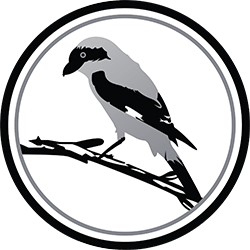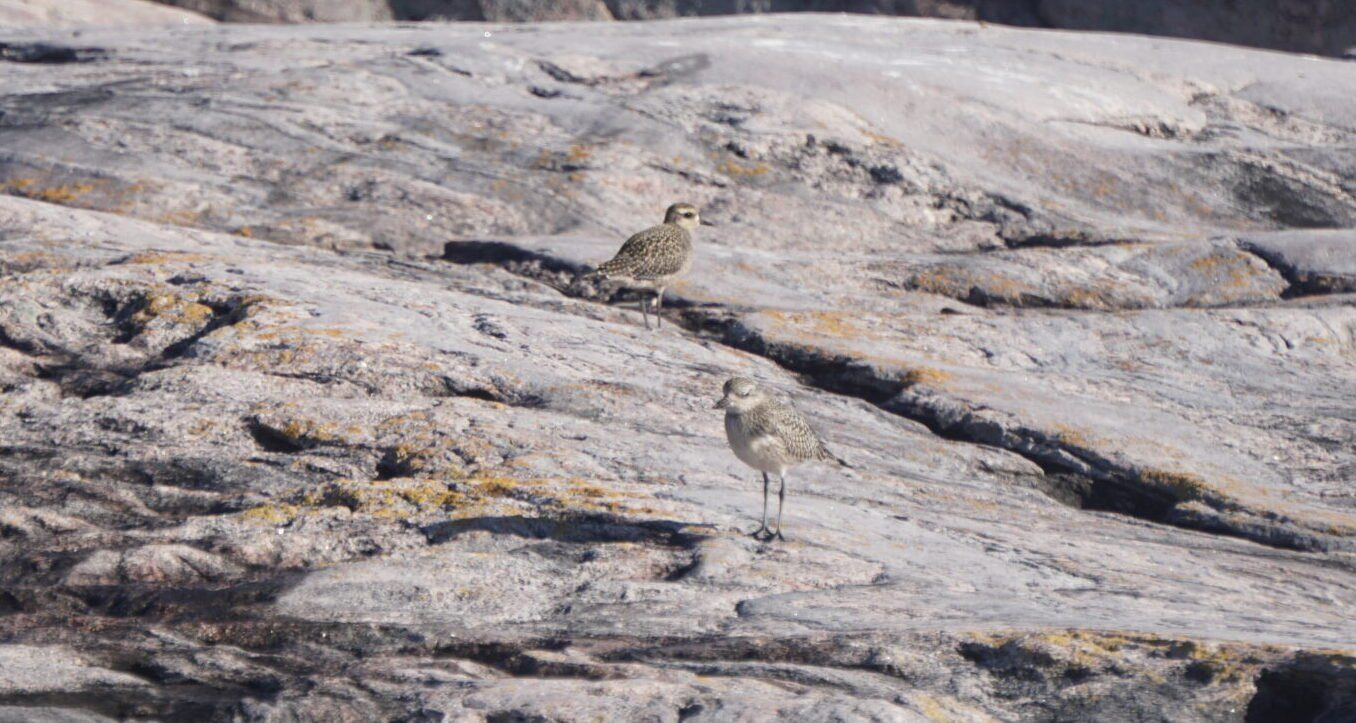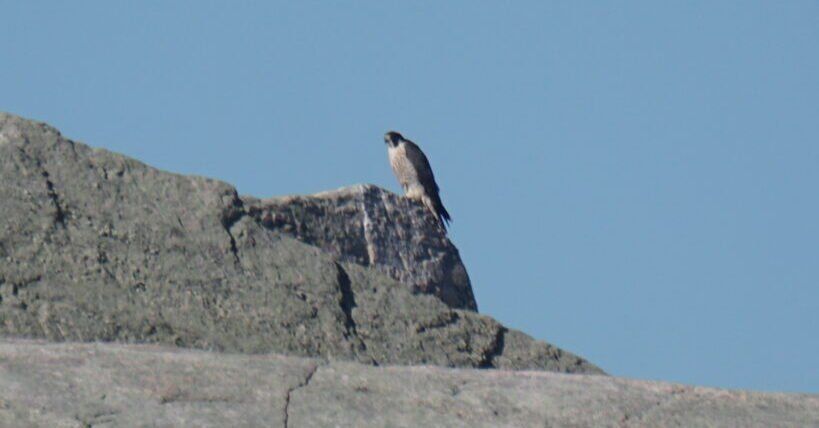Weekly Roundup September 21st to 27th 2020
A very exciting week for birding in Muskoka! It included a new bird for Muskoka, as well as several other rare species. Fall migration appears to be in full swing and several species are beginning to move through Muskoka, so there’s a chance for several rarities to pop up.
The most exciting bird this week was a HUDSONIAN GODWIT which was briefly seen at the Bracebridge Sewage Lagoons by David Goodyear. Due to the lack of shoreline at the lagoons, the bird didn’t hang around and continued to migrate further south. This is a first for Muskoka and brings the total species of birds seen in Muskoka up to 303. Several other shorebirds are moving through Muskoka as well, with other notable species being a juvenile BLACK-BELLIED PLOVER observed by Dale Wenger in Huntsville and an AMERICAN GOLDEN-PLOVER, BLACK-BELLIED PLOVER, and SANDERLING observed by Aaron and Jim Rusak on Gray Island in Georgian Bay.
American Golden-Plover [back] and Black-bellied Plover [front], Aaron Rusak, Gray Island
Raptor species are increasing as well, with several common and uncommon species being seen in kettles moving south. Notable species were a PEREGRINE FALCON and a pair of BALD EAGLES both seen out on Gray Island by Aaron and Jim Rusak. TURKEY VULTURES can also be seen in large numbers on sunny days and their numbers have been steadily increasing throughout the week.
Peregrine Falcon, Aaron Rusak, Gray Island
Fall migration usually brings large numbers of waterfowl and this week several uncommon species have been seen at the Bracebridge Sewage Lagoons and other large waterbodies. In the last week, GADWALL, LESSER SCAUP, NORTHERN SHOVELER, and PIED-BILLED GREBE have all been observed in water bodies around Muskoka. An AMERICAN COOT has taken up residence at the Bracebridge Sewage Lagoons and has been seen there for the better part of the week. Geese numbers are increasing as well and large flocks are being seen migrating or on open areas like golf courses or farm fields. A probable CACKLING GOOSE was observed at the Bracebridge Sewage Lagoons, so now is the time to get out looking for those rare goose species.
Cackling Goose[left] and Canada Goose [right], Aaron Rusak, Bracebridge Sewage Lagoons
Moving onto the thrushes, warblers, and sparrows, we had a few stand-outs this week. A LECONTE’S SPARROW was found by Aaron Rusak at the Bracebridge Sewage Lagoons. This is the third record, but like the Godwit, it could not be refound. A NELSON’S SPARROW was also recorded at the Bracebridge Sewage Lagoons; it also wasn’t refound. GRAY-CHEEKED THRUSHES were seen at several locations including along Taylor Road, Arrowhead, and near Bigwind Island. Finally, a LAPLAND LONGSPUR was seen as well at the Bracebridge Sewage Lagoons on September 26th.
LeConte’s Sparrow, Aaron Rusak, Bracebridge Sewage Lagoons
What to Look for this Week
With birds starting to move, this upcoming week will be a fantastic time to look for rare migrants coming into Muskoka. A high number of sparrows were moving last week, so this upcoming week should be prime time to find those rare wandering sparrow. NELSON’S, CLAY-COLOURED, and LECONTE’S SPARROWS are all continuing possibilities coming into this week. Since geese numbers are increasing, there may be a few early migrants coming in this week. Check farm fields and golf courses for CACKLING, ROSS’, and SNOW GEESE, with an early BRANT also being a possibility.
Vireos and warblers are still moving through in good numbers, though we’re getting later in the season for them. Next week may be the last time to grab your PHILADELPHIA VIREO, TENNESSEE WARBLER, or any of the other uncommon warblers seen in Muskoka. Any deciduous stand is a good possibility for these birds and if you’re looking for them, be sure to listen for BLACK-CAPPED CHICKADEES. They move in mixed flocks, but the chickadees tend to be the most vocal of the birds.
With the Bracebridge Sewage Lagoons’ water level being high, you may have more luck at Henry Marsh if you’re looking for shorebirds. It’s late in the shorebird migration, but DUNLIN and PECTORAL and WHITE-RUMPED SANDPIPERS may still be moving through. They’re going to be tricky to find unless you can make it out to Georgian Bay, but it’s worth a look along any beach that you can find.
Finally, a couple duck species may start moving through in the next week. SURF and WHITE-WINGED SCOTERS may be appearing on the big lakes. Kirby’s Beach, Bowyer’s Beach, and Muskoka Beach Road are all good places to be checking, but you’ll definitely need to take a scope. Several other waterfowl species may also be moving through, so it’s probably worth checking some open water every day.
Got a rare sighting of your own? Feel free to send it to aaron@shrikebirding.com and it may be used in our next weekly report. We’re hoping to add additional information in our future weekly reports, so unusual sightings within Muskoka are hugely appreciated.
SHRIKE BIRDING
Copyright Shrike Birding
Site Designed & Developed by Client First Web Design & Graphics




